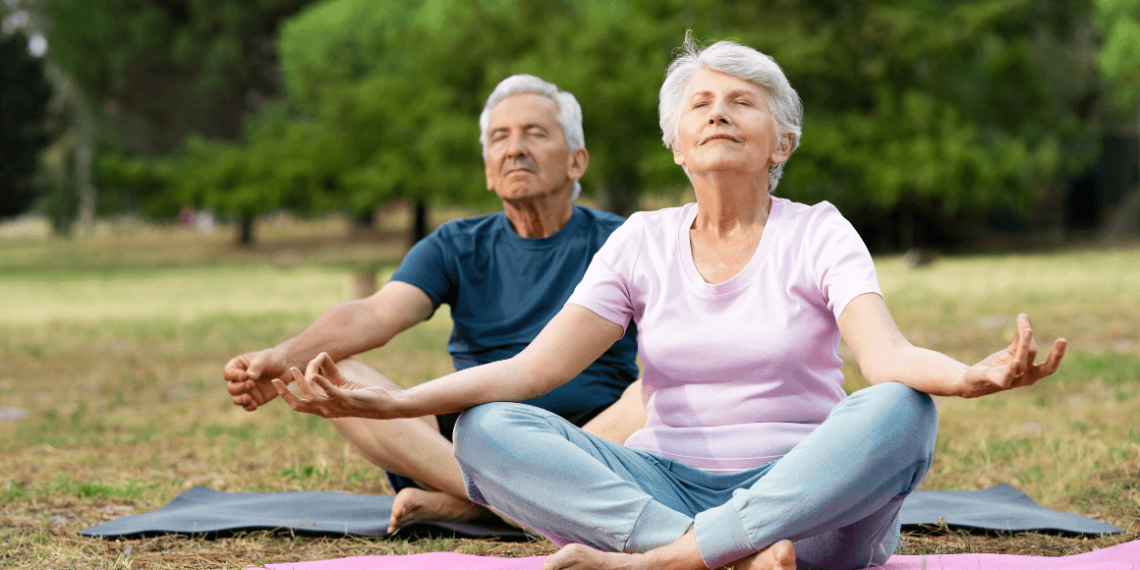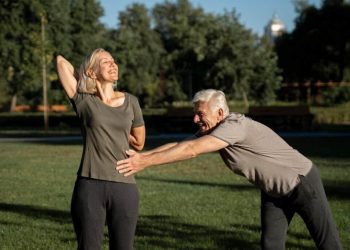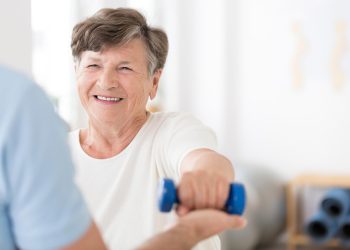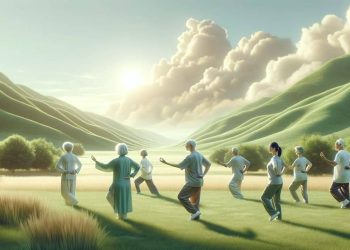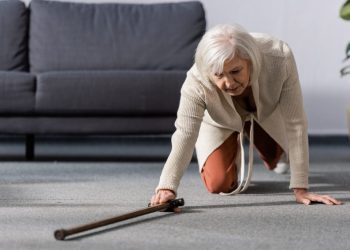Growing older is a natural part of life’s journey, and it brings with it both wisdom and unique challenges. For many seniors, the prospect of exercise can feel daunting, especially when mobility decreases or health concerns mount. Yet the truth is beautifully simple: it’s never too late to embrace movement, and gentle exercise can transform the golden years into a time of vitality, independence, and renewed confidence.
The good news is that exercise for older adults doesn’t mean grueling workouts or high-intensity routines. Instead, gentle, low-impact activities can provide remarkable benefits while respecting the body’s changing needs. Whether you’re 65 or 95, whether you’re quite active or just beginning to move more, there’s a form of gentle exercise that can enrich your life.
The Profound Benefits of Gentle Movement
The benefits of regular, gentle exercise for elderly individuals extend far beyond physical fitness. They touch every aspect of daily life and wellbeing.
Physical Health Improvements
Gentle exercise strengthens muscles that support balance and coordination, reducing the risk of falls—one of the most serious threats to senior independence. Regular movement keeps joints flexible, easing the stiffness and discomfort of arthritis. It improves cardiovascular health, helping the heart pump more efficiently and maintaining healthy blood pressure. Even modest activity can help manage chronic conditions like diabetes, osteoporosis, and heart disease.
Perhaps most importantly, gentle exercise helps maintain the strength needed for daily activities: climbing stairs, carrying groceries, playing with grandchildren, or simply getting up from a chair. This functional fitness is the key to independence.
Mental and Emotional Wellbeing
The mind-body connection becomes even more precious with age. Gentle exercise releases endorphins, those natural mood enhancers that combat depression and anxiety. Many seniors find that regular movement improves sleep quality, reduces stress, and provides a sense of accomplishment and purpose.
Exercise also supports cognitive health. Research suggests that regular physical activity may help maintain memory, processing speed, and executive function. It increases blood flow to the brain and may even reduce the risk of cognitive decline and dementia.
Social Connection and Quality of Life
Group exercise classes, walking clubs, or even gentle movement with a friend can combat loneliness and isolation—issues that affect many older adults. These social connections are vital for emotional health and overall quality of life. The shared experience of working toward wellness together creates bonds and provides motivation that’s hard to find when exercising alone.
Safe and Effective Low-Impact Exercises
The beauty of gentle exercise is its variety. There are numerous options that can accommodate different fitness levels, physical limitations, and personal preferences.
Walking: The Foundation of Gentle Fitness
Walking remains one of the most accessible and effective forms of exercise for seniors. It requires no special equipment beyond comfortable, supportive shoes, and it can be adapted to any fitness level. Start with short distances—even five minutes counts—and gradually increase duration as comfort allows.
Walking outdoors provides fresh air, sunshine, and vitamin D, while indoor mall walking offers climate control and social opportunities. For those with balance concerns, a walking aid or trekking poles can provide extra stability and confidence.
Water-Based Exercise
Water aerobics and aquatic therapy are gifts to aging joints. The buoyancy of water supports body weight, reducing stress on joints while providing gentle resistance that builds strength. Water exercise is particularly beneficial for those with arthritis, as the warm water soothes aching joints while allowing for greater range of motion than land-based exercise.
Many community centers, YMCAs, and senior centers offer water aerobics classes specifically designed for older adults. The social atmosphere and guidance of a trained instructor make these classes both safe and enjoyable.
Chair Exercises
For those with limited mobility or balance concerns, chair exercises provide a wonderful way to stay active safely. Seated exercises can improve flexibility, strength, and circulation without the risk of falling. Leg lifts, arm circles, seated marches, and gentle twists can all be performed from the security of a sturdy chair.
Chair yoga and chair tai chi have gained popularity for good reason—they combine gentle movement with mindfulness and breath work, offering physical and mental benefits simultaneously.
Tai Chi: Moving Meditation
Tai chi, often described as “meditation in motion,” involves slow, flowing movements that improve balance, flexibility, and strength. Numerous studies have shown tai chi’s effectiveness in preventing falls among older adults. The gentle, controlled movements can be adapted for various fitness levels, and the meditative aspect provides mental calm and focus.
Many senior centers and community centers offer tai chi classes specifically for older adults, often taught by instructors who understand the unique needs of this population.
Gentle Yoga
Senior-friendly yoga focuses on flexibility, balance, and gentle strengthening without demanding poses or strenuous holds. Props like blocks, straps, and chairs make poses accessible, and modifications ensure everyone can participate safely. Yoga also emphasizes breathing and mindfulness, which can reduce stress and improve mental clarity.
Look for classes specifically labeled as “gentle yoga,” “senior yoga,” or “chair yoga” to ensure appropriate pacing and instruction.
Stretching and Flexibility Work
Simple stretching routines can work wonders for maintaining range of motion and preventing stiffness. Gentle neck rolls, shoulder shrugs, arm circles, and leg stretches can be incorporated into daily routines. Stretching is particularly beneficial first thing in the morning to ease stiffness and before bed to promote relaxation.
Light Strength Training
Building and maintaining muscle mass becomes increasingly important with age. Light strength training using resistance bands, light hand weights (1-3 pounds), or even household items like soup cans can help preserve muscle strength. The key is using light resistance with proper form, focusing on controlled movements rather than heavy weights.
Essential Safety Considerations
Safety must always be the first priority when beginning or maintaining an exercise routine. These considerations can help ensure that exercise remains beneficial and injury-free.
Consult Healthcare Providers
Before starting any new exercise program, speak with your doctor or healthcare provider. They can advise on appropriate activities based on your specific health conditions, medications, and physical limitations. This is especially important if you have heart disease, diabetes, arthritis, osteoporosis, or have recently had surgery.
Start Slowly and Progress Gradually
The “no pain, no gain” mentality has no place in senior fitness. Start with just a few minutes of activity and gradually increase duration and intensity over weeks and months. Listen to your body and respect its signals. Mild muscle fatigue is normal, but sharp pain is a warning sign to stop.
Focus on Balance and Stability
Falls are a serious concern for older adults. When exercising, especially when standing, ensure you have something stable nearby to hold onto if needed—a sturdy chair, wall, or railing. Remove tripping hazards like loose rugs, and wear non-slip footwear. Consider exercising with a partner or in a supervised class, especially when first starting.
Stay Hydrated
Older adults may have a diminished sense of thirst, making dehydration a real risk. Drink water before, during, and after exercise, even if you don’t feel particularly thirsty. This is especially important in warm weather or heated indoor spaces.
Warm Up and Cool Down
Always begin with a gentle warm-up of 5-10 minutes to prepare muscles and joints for activity. This might include easy walking or gentle range-of-motion movements. Similarly, cool down after exercise with gentle stretching to prevent stiffness and promote flexibility.
Wear Appropriate Clothing and Footwear
Comfortable, breathable clothing that allows free movement is essential. Most importantly, wear supportive, well-fitting shoes with non-slip soles. Proper footwear reduces the risk of falls and provides cushioning for joints.
Be Mindful of Chronic Conditions
If you have specific health conditions, take appropriate precautions. Those with diabetes should monitor blood sugar before and after exercise. Those with heart conditions should be aware of warning signs like chest pain or unusual shortness of breath. Those with osteoporosis should avoid movements that involve bending forward from the waist or twisting the spine.
Getting Started: Practical Tips for Success
Beginning an exercise routine can feel overwhelming, but these strategies can help make the journey smoother and more sustainable.
Set Realistic, Meaningful Goals
Rather than focusing on ambitious fitness targets, set goals that matter to your daily life: being able to play on the floor with grandchildren, walking through the grocery store without fatigue, or maintaining independence in your home. These personally meaningful goals provide powerful motivation.
Find Activities You Enjoy
Exercise doesn’t have to feel like medicine. The best exercise is the one you’ll actually do, so seek activities that bring you joy. If you love nature, walking in a park might be perfect. If you’re social, group classes might be ideal. If you prefer privacy, home-based exercises might suit you best.
Create a Routine
Consistency matters more than intensity. Try to exercise at the same time each day to build a habit. Many seniors find morning exercise energizing, while others prefer afternoon or early evening sessions. Choose whatever time fits your schedule and energy patterns.
Track Your Progress
Keep a simple log of your activities. Noting what you did and how you felt can provide motivation as you see your progress over time. Celebrate small victories—they all count.
Join a Community
Consider joining a senior center, fitness class, or walking group. The social support, accountability, and encouragement from peers can make exercise more enjoyable and sustainable.
Every step, every stretch, every movement is an investment in your health, independence, and quality of life. There’s no perfect time to start—today is as good as any. Be patient with yourself, celebrate small victories, and remember that the goal isn’t perfection but consistent, gentle progress.
Your body has carried you through life’s journey with remarkable resilience. Now, through gentle, regular movement, you can honor that body and support it in carrying you forward with strength, balance, and vitality. Whether you’re taking your first steps toward a more active lifestyle or maintaining a routine you’ve built over years, know that every effort matters.
Movement is life, and it’s never too late to embrace it. Your future self will thank you for the gift of gentle exercise today.
- what is tai chi walking – gentle exercise for elderly
- gentle tai chi for seniors
- gentle movement for elderly
- low-impact gentle exercises
- senior fitness activities
- gentle balance for elderly
- gentle mobility exercises
- gentle exercise for arthritis
- gentle cardio for elderly
- active aging with gentle exercise

